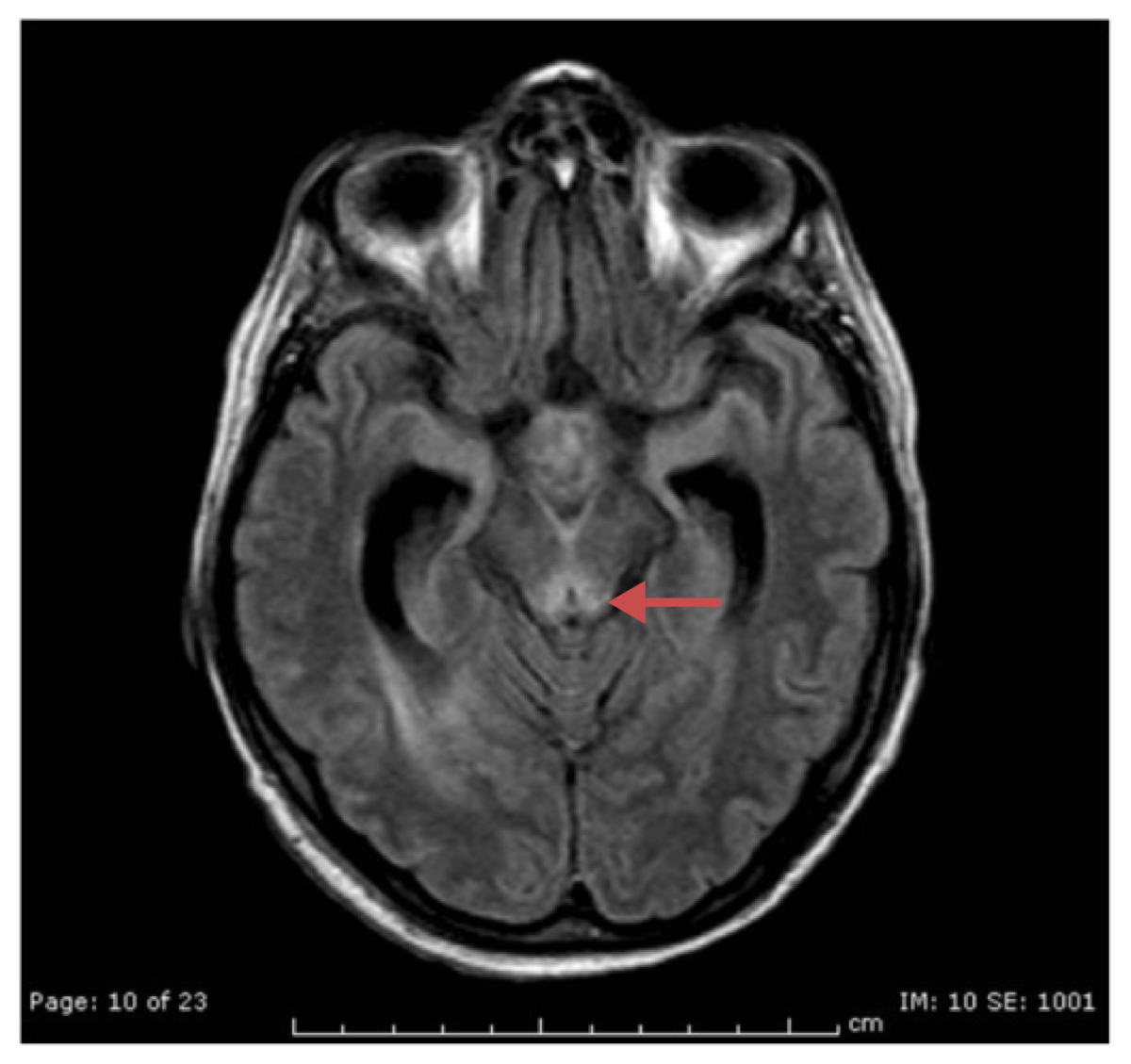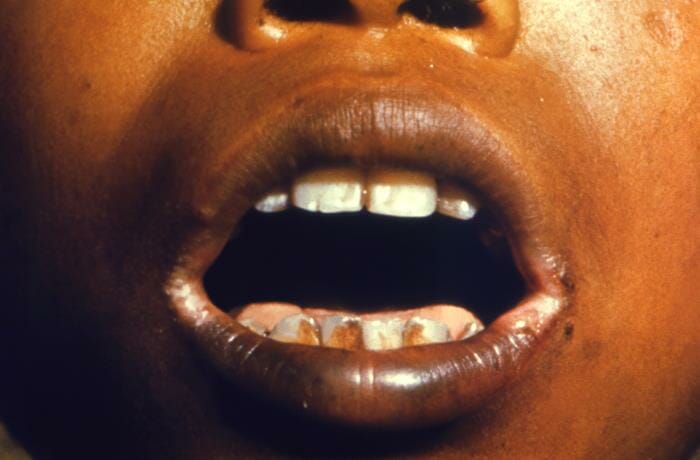Water-soluble vitamins are soluble in the blood and minimally stored in the body, unlike fat-soluble vitamins. The most clinically important water-soluble vitamins include vitamin B1 (thiamin), vitamin B2 (riboflavin), vitamin B3 ( niacin Niacin A water-soluble vitamin of the B complex occurring in various animal and plant tissues. It is required by the body for the formation of coenzymes nad and NADP. It has pellagra-curative, vasodilating, and antilipemic properties. Lipid Control Drugs), vitamin B5 (pantothenic acid), vitamin B6 (pyridoxine), vitamin B7 (biotin), vitamin B9 ( folate Folate Folate and vitamin B12 are 2 of the most clinically important water-soluble vitamins. Deficiencies can present with megaloblastic anemia, GI symptoms, neuropsychiatric symptoms, and adverse pregnancy complications, including neural tube defects. Folate and Vitamin B12), vitamin B12 ( cobalamin Cobalamin A cobalt-containing coordination compound produced by intestinal microorganisms and found also in soil and water. Higher plants do not concentrate vitamin B 12 from the soil and so are a poor source of the substance as compared with animal tissues. Intrinsic factor is important for the assimilation of vitamin B 12. Folate and Vitamin B12) (the last 2 being some of the most clinically important vitamins and discussed separately), and vitamin C (ascorbic acid). Many of these vitamins are critical components of different metabolic pathways and play important roles in normal cell function. Most are found in our daily diet, but some people with restrictive diets, malabsorptive conditions, or alcohol use disorder Alcohol use disorder Alcohol is one of the most commonly used addictive substances in the world. Alcohol use disorder (AUD) is defined as pathologic consumption of alcohol leading to impaired daily functioning. Acute alcohol intoxication presents with impairment in speech and motor functions and can be managed in most cases with supportive care. Alcohol Use Disorder may present clinically with vitamin deficiencies and their consequences. Since they are water-soluble and excreted by the kidneys Kidneys The kidneys are a pair of bean-shaped organs located retroperitoneally against the posterior wall of the abdomen on either side of the spine. As part of the urinary tract, the kidneys are responsible for blood filtration and excretion of water-soluble waste in the urine. Kidneys: Anatomy, most of these vitamins do not reach toxic levels.
Last updated: Mar 29, 2023
Vitamins are important organic substances that are required for normal metabolic functions These substances cannot be synthesized by the body; they must be ingested in the diet. The vitamins are divided into water-soluble and fat-soluble vitamins.
| Vitamin | Clinical condition caused by deficiency |
|---|---|
| B1 (thiamine) |
|
| B3 ( niacin Niacin A water-soluble vitamin of the B complex occurring in various animal and plant tissues. It is required by the body for the formation of coenzymes nad and NADP. It has pellagra-curative, vasodilating, and antilipemic properties. Lipid Control Drugs) | Pellagra |
| Vitamin C | Scurvy |
| Folate Folate Folate and vitamin B12 are 2 of the most clinically important water-soluble vitamins. Deficiencies can present with megaloblastic anemia, GI symptoms, neuropsychiatric symptoms, and adverse pregnancy complications, including neural tube defects. Folate and Vitamin B12 and vitamin B12 |
|
Vitamin B1 is also known as thiamin. Thiamin deficiency causes the clinical syndromes of beriberi and Wernicke-Korsakoff syndrome Wernicke-Korsakoff syndrome 2 different syndromes that are different stages of the same disease including Wernicke’s encephalopathy and Korsakoff psychosis.Wernicke-Korsakoff syndrome is seen in patients with alcohol use disorder 8–10 times more than in the general population. Wernicke Encephalopathy and Korsakoff Syndrome.
Typical RDAs for thiamin:
Thiamin is found in:
Thiamin deficiency manifests as 2 types of clinical syndromes: beriberi and Wernicke-Korsakoff syndrome Wernicke-Korsakoff syndrome 2 different syndromes that are different stages of the same disease including Wernicke’s encephalopathy and Korsakoff psychosis.Wernicke-Korsakoff syndrome is seen in patients with alcohol use disorder 8–10 times more than in the general population. Wernicke Encephalopathy and Korsakoff Syndrome.
Beriberi:
Wernicke-Korsakoff syndrome Wernicke-Korsakoff syndrome 2 different syndromes that are different stages of the same disease including Wernicke’s encephalopathy and Korsakoff psychosis.Wernicke-Korsakoff syndrome is seen in patients with alcohol use disorder 8–10 times more than in the general population. Wernicke Encephalopathy and Korsakoff Syndrome: 2 different syndromes that are different stages of the same disease.

A patient with Wernicke encephalopathy showing hyperintensity of the periaqueductal gray substance
Image: “Fig3: FLAIR axial shows hyperintensity of the periaqueductal grey” by Busani S. et al. License: CC BY 4.0Vitamin B2 is known as riboflavin, and deficiency is rarely seen in the United States.

Angular stomatitis due to riboflavin deficiency
Image: “This image depicted a frontal view of the lower half of a patient’s face” by Public Health Image Library (PHIL). License: Public DomainNiacin Niacin A water-soluble vitamin of the B complex occurring in various animal and plant tissues. It is required by the body for the formation of coenzymes nad and NADP. It has pellagra-curative, vasodilating, and antilipemic properties. Lipid Control Drugs is the generic name for a group of compounds including nicotinic acid Nicotinic acid A water-soluble vitamin of the B complex occurring in various animal and plant tissues. It is required by the body for the formation of coenzymes nad and nadp. It has pellagra-curative, vasodilating, and antilipemic properties. Lipid Control Drugs, nicotinamide, and related derivatives. It is widely distributed in plant and animal foods. Niacin Niacin A water-soluble vitamin of the B complex occurring in various animal and plant tissues. It is required by the body for the formation of coenzymes nad and NADP. It has pellagra-curative, vasodilating, and antilipemic properties. Lipid Control Drugs deficiency causes the clinical condition known as pellagra.
Niacin Niacin A water-soluble vitamin of the B complex occurring in various animal and plant tissues. It is required by the body for the formation of coenzymes nad and NADP. It has pellagra-curative, vasodilating, and antilipemic properties. Lipid Control Drugs is required for most metabolic processes in the body:
The clinical syndrome associated with niacin Niacin A water-soluble vitamin of the B complex occurring in various animal and plant tissues. It is required by the body for the formation of coenzymes nad and NADP. It has pellagra-curative, vasodilating, and antilipemic properties. Lipid Control Drugs deficiency is called pellagra.

Characteristic skin rash associated with pellagra
Image: “This child has the skin rash associated with pellagra” by CDC. License: Public DomainVitamin B5 is also known as pantothenic acid.
The biologically active form of vitamin B5 is coenzyme A (CoA):
Vitamin B6 is the generic name for 6 compounds, including pyridoxine, pyridoxal, pyridoxamine, and their phosphate Phosphate Inorganic salts of phosphoric acid. Electrolytes esters.
Pyridoxal 5´-phosphate (PLP) and pyridoxamine 5´-phosphate (PMP) are the active forms of vitamin B6 and have the following functions:
Found in a wide variety of foods:
Vitamin B6 is among the only water-soluble vitamins that can cause significant toxicity Toxicity Dosage Calculation if taken in high doses.
Cofactor for several carboxylases that catalyze critical steps in the metabolism of fatty acids Acids Chemical compounds which yield hydrogen ions or protons when dissolved in water, whose hydrogen can be replaced by metals or basic radicals, or which react with bases to form salts and water (neutralization). An extension of the term includes substances dissolved in media other than water. Acid-Base Balance, glucose Glucose A primary source of energy for living organisms. It is naturally occurring and is found in fruits and other parts of plants in its free state. It is used therapeutically in fluid and nutrient replacement. Lactose Intolerance, and amino acids Amino acids Organic compounds that generally contain an amino (-NH2) and a carboxyl (-COOH) group. Twenty alpha-amino acids are the subunits which are polymerized to form proteins. Basics of Amino Acids. Biotin is involved in:
Dietary deficiency is extremely rare.
Vitamin C is an important antioxidant and is critical in wound healing Wound healing Wound healing is a physiological process involving tissue repair in response to injury. It involves a complex interaction of various cell types, cytokines, and inflammatory mediators. Wound healing stages include hemostasis, inflammation, granulation, and remodeling. Wound Healing and in the synthesis Synthesis Polymerase Chain Reaction (PCR) of collagen Collagen A polypeptide substance comprising about one third of the total protein in mammalian organisms. It is the main constituent of skin; connective tissue; and the organic substance of bones (bone and bones) and teeth (tooth). Connective Tissue: Histology, among its many functions. Vitamin C deficiency causes the clinical condition scurvy.
Vitamin C deficiency leads to the clinical condition called scurvy and can be seen as soon as 1–3 months with little to no intake.

Child with vitamin C deficiency:
A: Contractures and ecchymoses
B: Hyperkeratosis and follicular purpura with corkscrew hairs (arrow)
C: Hemorrhagic gingivitis and neurotic excoriations (arrow)